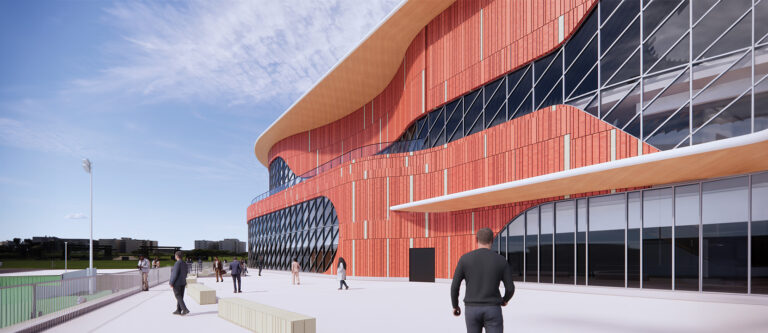Across Canada billions of dollars have been committed to infrastructure projects by different levels of government. In addition to ambitious plans to build new transit lines, hospitals, and arenas, there is also a sizeable backlog of repairs and maintenance that needs to be addressed. A new report proposes that there are five areas in which the private sector can add greater value to a range of infrastructure projects.
The report, “Unlocking Value in Infrastructure: The Potential Role of the Private Sector,” was recently released by the Future of Infrastructure Group, which brings together industry leaders in the sector to provide a positive and coherent voice to help governments deliver the best value from infrastructure investments. To make the most out of Canada’s planned investments, this group discusses and shares their expertise on best approaches to prioritizing, planning, purchasing, constructing, maintaining, and operating infrastructure. Private contributors of the group include the following: Altus, Arup, Colliers, Concert Infrastructure, EllisDon, Kiewit, Plenary Group, Siemens, SNC Lavalin, and WSP.
With governments facing extreme fiscal challenges there is an opportunity for the public and private sector to reinvent how they work together to deliver more value for infrastructure investment.
Value can come from paying for new highway lanes through smart lanes that can favour transit and provide a faster option home for commuters. New windows and heating systems for schools can be paid for through energy savings. Affordable housing and community amenities can be built within transit stations.
Value can also come from being less prescriptive in how hospitals should be built and evaluating what is most important to patient’s recoveries. Smaller projects like bridges can be bundled together to bring savings in design, project management, and offsite construction. Using technology can help identify and rectify problems in the design phase.
According to the authors of the report, John Allen and Natalia Lasakova from Global Public Affairs, there are broadly five buckets where the private sector can add greater value:
- Revenue opportunity: where there is an opportunity for long-term revenue through utility bills, user fees, tolls, or rent, there are opportunities for the private sector to finance new infrastructure.
- Leveraging land value: rising land values and scarcity especially in an urban setting provide partnership opportunities, especially when there is a strong need for additional housing or public amenities.
- Reducing capital costs:reducing the cost of building infrastructure frees up government funding that can be spent on additional projects.
- Operating cost reductions: operating costs can represent 80 per cent of the overall cost of an asset, by reducing those costs in the long term it can be used to finance capital investments.
- Unlocking economic potential: future tax revenue from new resource or property developments and engaging local communities to invest in their economic future can enable investments in critical job-enabling infrastructure.
The report advises that to encourage private participation in infrastructure there are some key steps governments can take. These largely relate to measures that provide greater transparency, clarity, and certainty. The report presents a series of case studies around how the public and private sector have worked together to deliver more and better infrastructure.
To read the full report, click here.
Featured image caption: A case study in monetizing energy savings: Algonquin College in Ottawa, Ontario. Through a 20-year energy performance contract Algonquin College’s infrastructure upgrades have delivered annual savings of $3.2 million through reduced energy use. The private sector finances the entire project and is repaid through energy savings.











